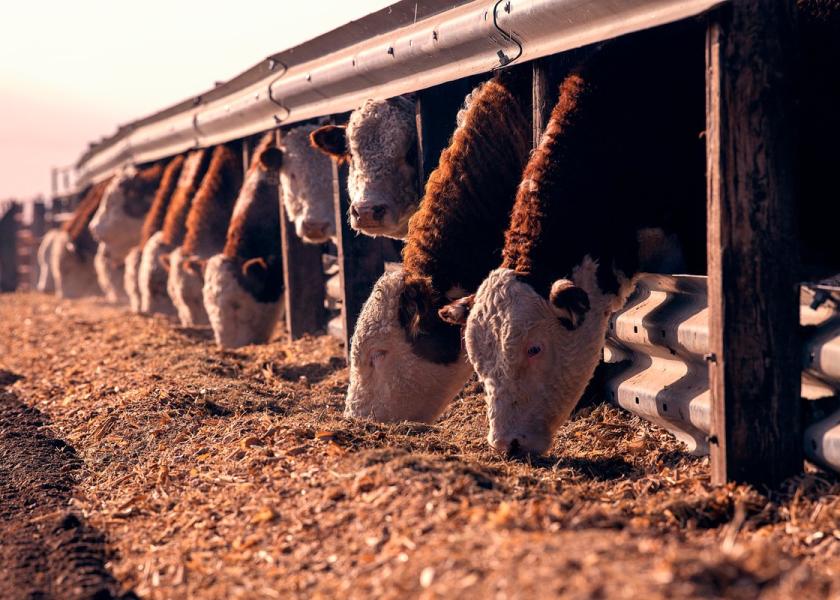Four Facilities Tips to Help Minimize the Impact of Flies on Cattle

Fly season is upon us and as a cattle producer, it can seem like it will never end. These external pests are not only a nuisance, but they can also negatively impact the productivity and profitability of your herd if not controlled properly. Choosing fly control products to fit your operation is important, but proper facilities management and product rotation and application are even more crucial for effectively controlling fly populations. Here are four tips to ensure you’re getting the most out of your fly control program this year.
1. Figure out where the flies are
The more you know about where flies live, breed and rest, the more effectively you can target your fly control tactics and spend fly control dollars as efficiently as possible. The first places to check? The edges on your operation and near water sources. The following areas are a good place to start your investigation:
• Fence lines where manure can mix with wet soil and accumulate.
• Edges of feeding aprons, potholes, pen corners, gates, stored silage, hay or manure and around gates.
• Wet areas such as around water troughs, pen drainage channels or the edges of holding ponds.
• Anywhere stale food accumulates such as underneath feed bunks or in the corners of feed bunks.
• Anywhere manure accumulates such as under fences, animal handling areas or corral facilities.
• At the edge of silage and haylage or damp areas under bales.
2. Implement regular sanitation protocols
Proper sanitation is a key to controlling several fly species, particularly house and stable flies, because it helps to break up the cycle of egg production. For best results, implement these tactics regularly:2
• Remove spilled feed.
• Clean barns every 7-10 days.
• Minimize water spillage. Remember, flies prefer to lay their eggs in moist areas. Plus, excess moisture leads to potentially increased food spoilage, giving flies more breeding areas.
3. Review feed bunk management strategies
Following best practices for feed bunk management is for more than just nutrition, it can also help decrease fly populations. Take a look at your existing protocols and consider the following:
• Several species of flies can develop in plant material, including old silage, around feed troughs or near trench silos. Clean up wet feeds and minimize the amount of time wet feeds are near bunks.
• Uneaten, moist hay can create a suitable environment for fly breeding. Spread out uneaten hay to help it dry more quickly or haul it away.
• Monitor feed troughs and storage bins on a regular basis and clean up any uneaten grain in or around those areas.
4. Manage vegetation growth
Keeping with the principle that flies cannot develop in dry materials, managing vegetation around your operation can also improve fly control methods. This includes:
• Practicing proper tiling to help reduce wet barnyards.
• Controlling weeds and managing excess plant growth around facilities can also cut down on odors.
• Keep your grass short around the operation to reduce hiding and breeding spots for flies.
In addition to facilities management, we can’t talk about controlling flies without talking about resistance management. Flies can develop reduced susceptibility to an active ingredient over time. Rotating chemical classes and modes of action (MOA) can help avoid fly resistance to insecticides. It’s important to implement a strategy of rotating about every year and remember to rotate between different MOA groups, not just brands or active ingredients in the same chemical class.
In addition, producers may consider the following rotation-related tips:
• Rotate late in the season to cut down on resistant overwintering flies.
• Avoid using two different long-acting MOAs at the same time.
• Discontinue using insecticide ear tags as soon as horn fly numbers decline in the fall to minimize the flies’ exposure time to the insecticide and help ensure fly populations that proliferate later in the season remain susceptible.
• Rotate MOA classes between applications when applying insecticides more than once per season or year
Limiting fly exposure to any one insecticide MOA helps sidestep the potential impact of cross-resistance and helps reduce selection pressure for resistance by any mechanism, minimizing the emergence of new resistant pest populations.
Reading and following label instructions and applying products at the right time, in the right way, for the right pest will further add to product effectiveness and overall success of your fly management plan.
To learn more about fly control and resistance management, talk with your veterinarian, your Elanco technical consultant or visit ElancoFlyControl.com.
References:
1 Campbell, J., Thomas, G. House fly and stable fly management in and near livestock facilities. Beef Cattle Handbook, A Product of Extension Beef Cattle Resources Committee. 2015. Available at: https://www.iowabeefcenter.org/bch/FlyManagement.pdf.
2 Kaercher, M. Best management practices for fly control. Michigan State University Beef Brief. 2006. Available at https://www.canr.msu.edu/uploads/236/58556/BestManagementFlyControl.pdf.
About Elanco
Elanco Animal Health (NYSE: ELAN) is a global leader in animal health dedicated to innovating and delivering products and services to prevent and treat disease in farm animals and pets, creating value for farmers, pet owners, veterinarians, stakeholders, and society as a whole. With nearly 70 years of animal health heritage, we are committed to helping our customers improve the health of animals in their care, while also making a meaningful impact on our local and global communities. At Elanco, we’re driven by our vision of Food and Companionship Enriching Life and our approach to sustainability, Elanco Healthy Purpose™– all to advance the health of animals, people, the planet and our enterprise. Learn more at www.elanco.com







